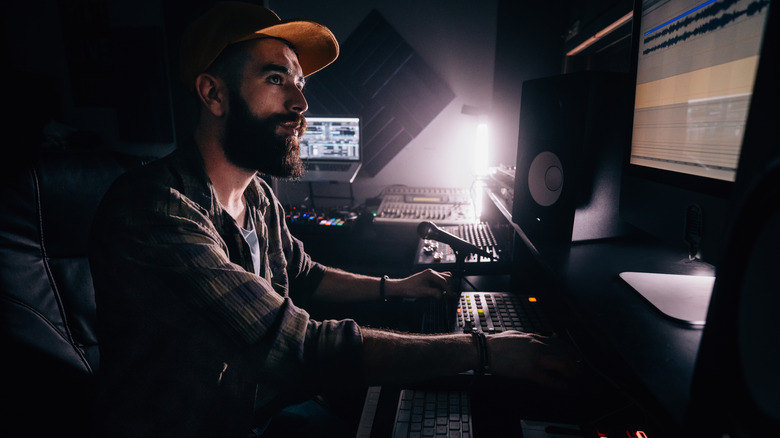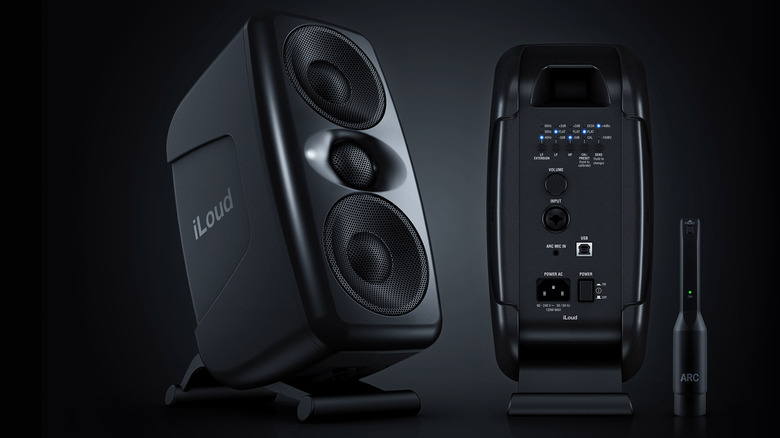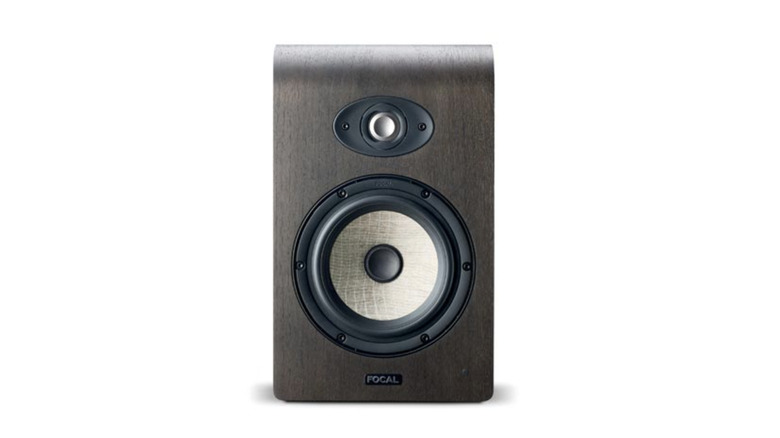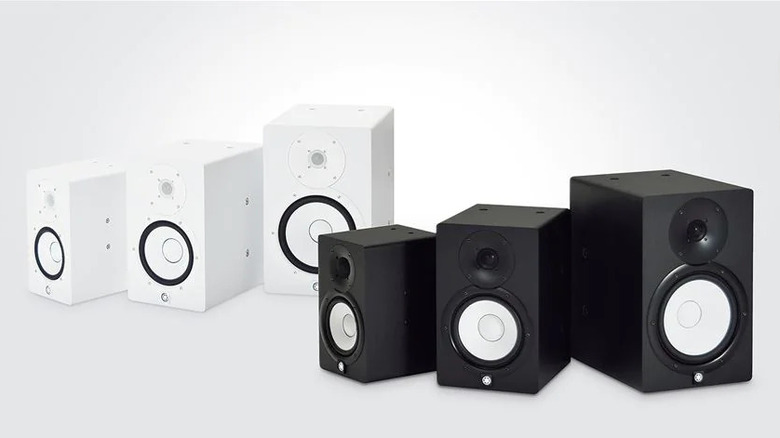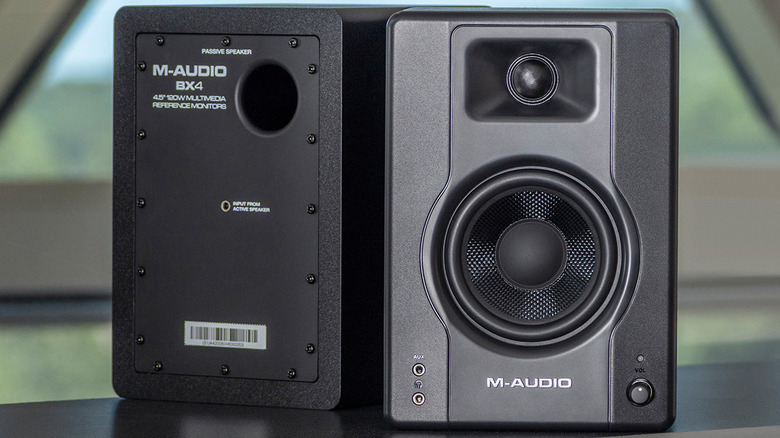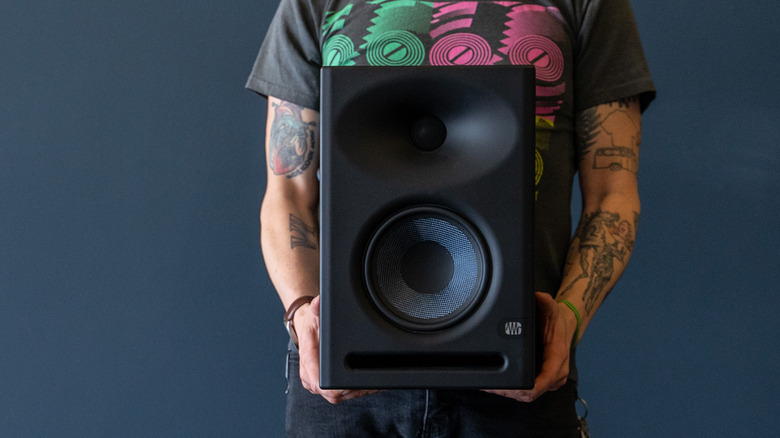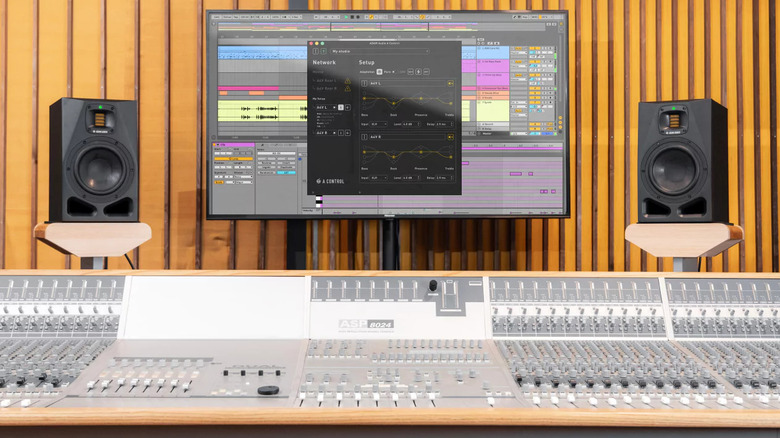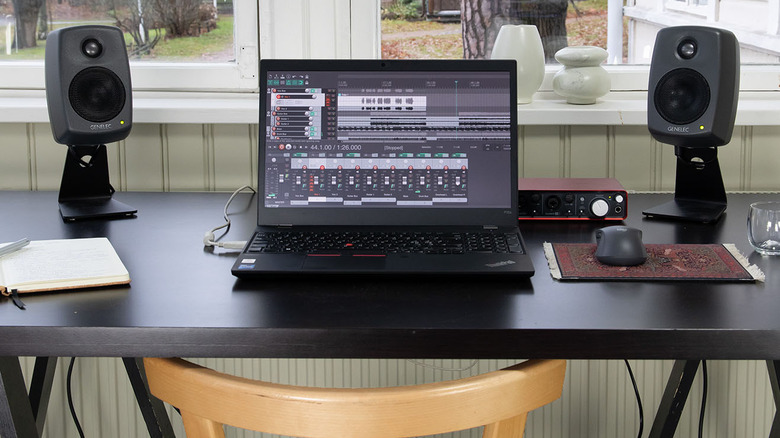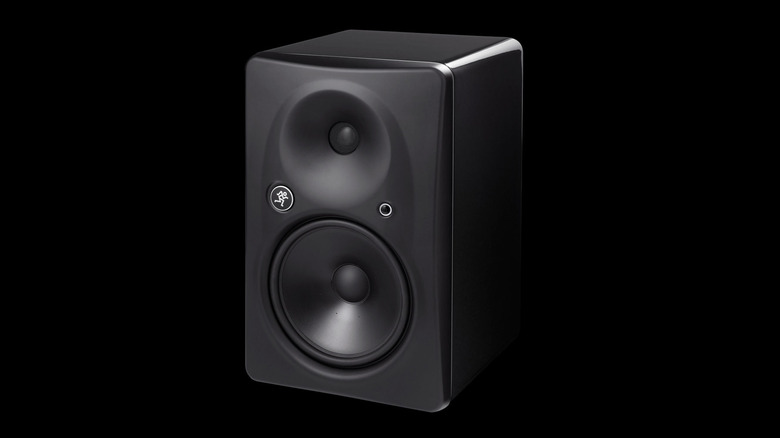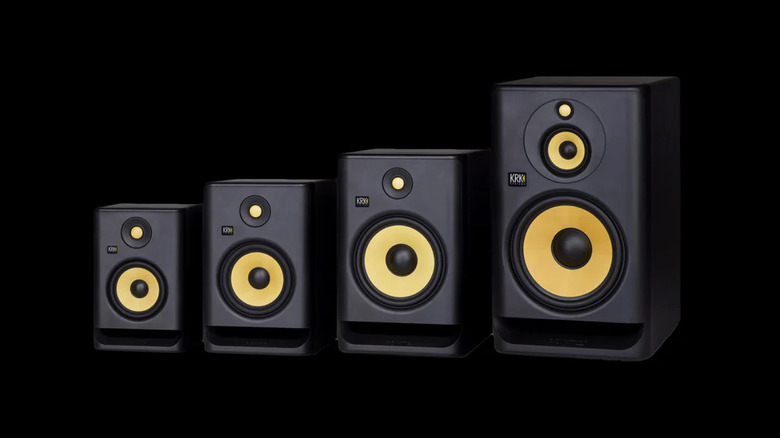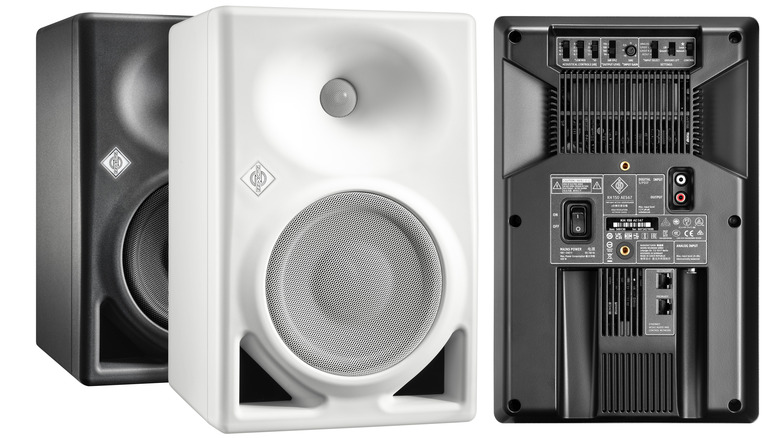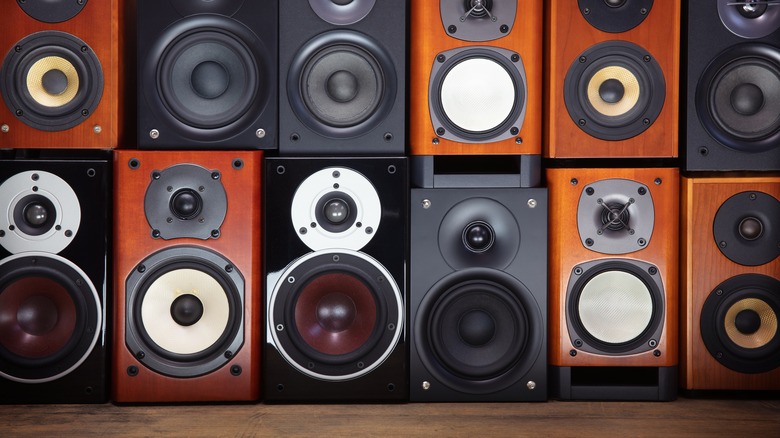The 10 Best Studio Monitors For Home Recording
Once you've got the right DAW for your home studio, and you've considered which audio interface works best for you, finding a pair of studio monitors is one of the final steps in bringing your musical creations to your ears. They provide highly detailed, intricate sound reproduction that should give better results than even the top computer speakers for mixing and mastering your projects. With a good pair of monitors, you can better determine how well an instrument sits in the mix and remove subtle inconsistencies within the recording. They will also help ensure your mixes sound as good when presented to the public, played over various sound systems, or through headphones.
While our chosen models are primarily for the interest of home recording enthusiasts, powered studio monitors are often used in home entertainment centers, for gaming, and as hi-fi components due to their superior clarity and convenient speaker and amplifier combination. These versatile solutions are worth considering for anyone who values high-quality sound in a compact package. They can include helpful features like advanced acoustic tuning, control via companion apps, and digital signal processing (DSP) technology to help you achieve the best possible listening experience.
Our chosen models are all nearfield monitors, meaning they are suitable for desktop recording and not oversized or overpowered enough to feature in a home entertainment setup. We've included a comprehensive range to cover several budgets, and our chief considerations when making our choices included build quality, sound quality, frequency range, aesthetics, features, and brand reputation.
11. IK Multimedia iLoud MTM
Music production gear used to be large, unwieldy, and often left in situ for most of its working life. Nowadays, digital recording has replaced bulky tape machines, and software can handle mixing-desk and plugin-gear duties, saving much of the expense, weight, and space associated with recording equipment. We have entered a new era of scaled-down music production, and IK Multimedia has engineered its iLoud MTM model to match, focusing on providing the best sound quality in a compact package.
The iLoud MTM achieves a remarkable amount within its comparatively small dimensions of around 10 inches tall by 5 inches wide. It produces 100 watts RMS of power per channel, with sound pressure levels (SPLs) of up to 103 decibels, so it certainly lives up to the "iLoud" moniker. Unlike with many smaller speakers, the frequency response is also impressive, thanks mainly to its D'Appolito configuration of two 3.5-inch bass/mid drivers working in tandem and sandwiching a single 1-inch silk-domed tweeter. The result has been described as "groundbreaking" for a speaker this size, ranging from a minimum of 40 hertz to 24 kilohertz, comparable to that of many larger (and more expensive) models.
IK Multimedia iLoud MTM studio monitors are surprisingly sophisticated, with a built-in EQ and automatic room correction to tailor the frequency response to the recording space. They are made even more ideal for smaller setups, thanks to their adjustable bases that can tilt up to 20 degrees, with microphone-stand and horizontal-mounting options. At under $400 per pair, the iLoud MTM leaves little to be desired as a versatile, compact, quality solution at the more affordable end of the price range.
10. Focal Shape 65
You may know French company Focal for its $3000 Stellia headphones or its high-end Aria K2 speakers, but the company makes studio monitors too. The beautifully presented, walnut-veneered Shape 65 nearfield monitors would look equally at home in a designer living space as they would in a modern studio setup. Everything is designed and manufactured in-house, and the result is a finely honed, boutique product that offers detailed sound across a wide frequency range.
Years of research and development went into creating the Focal Shape 65, and it is stacked with audio innovations that produce absolute acoustic transparency, which is essential when mixing and mastering projects. A tight bass response gives way to neutral mids, with a tweeter delivering highly accurate sound reproduction in the higher registers in a range that spans 40 to 35 kilohertz.
Unsurprisingly, quality materials are used throughout the Focal Shape 65's construction, including aluminum and magnesium for the 1-inch inverted tweeter and sandwiched flax (the same plant that produces oil from its seeds) for the 6.5-inch woofer cone. The speakers are driven by dual high- and low-frequency amplifiers providing a combined 105 Watts of power, with maximum SPLs of 109 decibels at a distance of one meter.
Another notable feature of the Shape 65 is its passive radiators on each side, replacing the typical hollow bass port and allowing them to be placed against a wall without losing clarity. Sound tailoring is accessible via bass and treble controls, with a dedicated adjustable crossover at 160 hertz. The technology and sound quality match the impressive aesthetics of these high-end nearfield monitors, priced for those with deeper pockets at around $900 each.
9. Yamaha HS8
Yamaha is to nearfield monitor manufacturing what Toyota is to saloon cars. It provides familiar and reliable solutions in the low-to-mid price range, with enough features to satisfy consumers without being overly flashy. Recognizable for their white woofers, Yamaha's HS nearfield monitors represent the latest generation in a range that traces its production back to the 1970s. Various woofer sizes, including 5-inch, 6.5-inch, and 8-inch variants, are available. Here, we selected the largest in the family for its superior bass response.
The flagship Yamaha HS8 features a bi-amp configuration, with a 75-watt low-frequency amplifier and 45-watt high-frequency amplifier producing a combined 120 watts of power. These are housed in an MDF enclosure (medium-density fiberboard, for the uninitiated), which absorbs resonance and features noise reduction technology to improve clarity. The 8-inch woofer and 1-inch dome tweeter combine to create an impressive frequency response of 38 hertz to 30 kilohertz.
At over 15 inches tall by almost 10 inches wide and costing around $400 per speaker, the HS8 couldn't be described as compact or affordable (for that, you could opt for the smaller HS7 or the far more moderately priced HS5, both of which have similar features). However, it provides excellent sound for larger desktop recording environments and professional installations. The sound can be manipulated using the Room Control and High Trim response features to suit your environment and can be embellished with the addition of the HS8S-powered subwoofer to enhance those lower frequencies further.
8. M-Audio BX4
M-Audio is a respected budget brand that has produced excellent products for decades, including mixing desks, MIDI controllers, audio interfaces, and studio monitors. Its BX4 compact speakers are surprisingly well built for their price point, and the quality of sound produced by its 4.5-inch Kevlar woofers belies their compact size.
The M-Audio BX4 may not be the most aesthetically pleasing item on this list, but it is nonetheless practical and, refreshingly, sold as a pair. For under $150, they will vastly improve any budget home recording setup by providing good clarity, bass response, accurate high frequencies, and some valuable features that make them all the more practical where space is limited. These include a forward-facing auxiliary input and headphone output for connecting devices and silent monitoring, high and low EQ controls for shaping your sound, and a switchable active speaker that can be placed on either side of your setup.
While compromises must be made concerning frequency range, aesthetics, and connectivity (there are 3.5mm TRS inputs but no XLR), the M-Audio BX4 makes an excellent solution for novice producers or those on a budget. Furthermore, suppose you are looking for a pair of smaller speakers to compare mixes or take your work with you on the road. In that case, they provide an ideal secondary solution besides your regular desktop monitors.
7. PreSonus Eris E7 XT
PreSonus is another brand with an impressive product line that caters to gigging musicians, home producers, and those on a budget. As another affordable desktop monitor, the Eris E7 XT offers excellent value and features and is ideal for basic setups for under $150 each.
Features include a 6.5-inch woven composite woofer and a 1.25-inch silk dome tweeter. It features comprehensive tuning controls for level, high-pass filter, low-frequency trim, high-frequency trim, and acoustic space, as well as a choice of three inputs for balanced XLR, TRS, and unbalanced RCA connectors. With an output of 104 decibels and 130 watts of power, it should offer plenty of headroom for close monitoring purposes, and it has circuitry protection that guards against power surges, overheating, ultra-low frequencies, and RF interference.
Many music production enthusiasts were introduced to PreSonus via its Studio One recording software. A special edition with its Studio Magic suite of virtual instruments, plug-ins, and samples is included when you buy its Eris E7 XT monitor, making it a solid choice for those existing fans of the brand. However, even without this addition, the monitor is one of the best options within its affordable price range.
6. Adam Audio A7V
German products are renowned worldwide for their high manufacturing standards and proficient research and development measures. The country's audio engineering is no different, and Berlin-based Adam Audio has produced one of the most impressive affordable nearfield monitors currently on the market, with the A7V model.
Professionals and home recording enthusiasts alike use the Adam Audio A7. While it costs less than $200 per unit, it boasts some novel features and highly accurate, detailed sound. The fiberglass and polymer tweeter can rotate to adapt to the room space, and the company's bespoke multi-layered mineral woofers distribute clean sound at high SPLs with minimal distortion. The frequency response is broad at 40 hertz to 44 kilohertz, and the output is an ample 105 Watts RMS between the woofer and tweeter combined.
External technologies embellish the A7V experience, including remote DSP-based functionality for setup and tuning. Advanced room correction software provided by Sonarworks makes adjustments accessible from your Mac or PC. This kind of attention to detail and progressive thinking puts Adam Audio and its A7V in a class of its own among affordable nearfield monitors, as they deliver an impressive amount of bang for relatively few bucks.
5. Genelec 8010A
Genelec is one of the most prominent names in audio engineering. It is recognizable for its products' sculpted profiles and unconventional design techniques that eschew the familiar black box aesthetic. The compact 8010A is among the company's most affordable studio monitors at around $350 each. Still, it has impressive performance for its size, and Genelec has applied the same steadfast principles of build quality as it does across the rest of its extensive range.
The 8010A housing is made from die-cast aluminum, making it a sturdy unit that is light at around 3.3 pounds. It includes active crossovers and acoustic tuning, and while it may be relatively underpowered at 50 watts for the 3-inch woofer and tweeter combined, it produces a big 96-decibel sound from a small package. As with all small speakers, a compromise must be met regarding frequency response, but 67 hertz to 25 kilohertz is a respectable range that will facilitate accurate work within most musical parameters.
The 8010A is optimized for working on the fly and smaller home studio applications. It comes with a useful desktop stand that enables upward tilting and isolates vibrations, improving clarity. If you need further evidence of this monitor's reputation, it has been in production, unchanged, since 2013 and is still as popular as ever.
4. Mackie HR824 Mk2
Mackie is a well-respected player in the industry for its extensive range of mixing consoles, PA systems, audio interfaces, and other studio gear. Its reference monitors are used in professional recording facilities worldwide, and the HR824 Mk2 continues this quality product line.
Mackie understands the demands of modern popular music, and the HR824 Mk2 reflects this. It has a flat frequency response, with an especially low end of 37 hertz, courtesy of a sizeable 8.75-inch woofer and a 1-inch titanium dome tweeter that projects up to 20 kilohertz. Typically, for a premium product such as this, there is a full suite of sound-shaping controls for high-frequency roll-off, low-frequency roll-off, and acoustic space. Connectivity is comprehensive, with options for balanced XLR, unbalanced RCA, and TRS inputs.
The HR824 Mk2 is especially popular among producers looking for distortion-free, precise mixes, especially among the lower end of the frequency spectrum. Its acoustic properties are excellent, as one might expect for a solution that sits within the premium price range at around $800 apiece, and this has made it popular not just within pro audio circles but also in gaming and even home theater applications.
3. KRK Rokit 7 G4
When it was time to replace my studio monitors, I needed to ensure that my choice would suit my budget and be reliable and proficient enough to provide me with years of service without outliving my requirements as a recording artist. After much research, I settled on the Rokit G4 series, as it ticked all the boxes and provided some neat features you don't often see at this price point.
The Rokit series boasts an exceptionally wide "sweet spot," meaning the ideal listening area is larger than most. This is useful as a player, as you're often not rooted in the same position as you work. Distortion is minimal, even at high SPLs, and the build quality feels very solid, with front-firing ports allowing them to be positioned close to the wall without affecting the low-frequency response. The Rokit 7 has a 7-inch woofer and a 1-inch tweeter and is the second-smallest in the series, with 5-inch, 8-inch, and 10-inch variants also available. Its frequency range tops out at an impressive 40 kilohertz, with a 42-hertz bottom end. The Power is ample at 145 watts, although this varies considerably across the range.
KRK speakers are recognizable by their bright yellow speaker cones and backlit logos when powered on, which add a little character to any home setup, but the technology is what really shines. The companion app is a handy addition to assist with tuning and speaker placement, and there is a DSP-based LCD on the rear panel that relays level data and provides 25 EQ settings for room tuning. A simple TRS/XLR combination input jack is adequate for most requirements, and its $249 retail price represents excellent value for a monitor of this quality.
2. Neumann KH 150
Like Adam Audio, Neumann is another Berlin-based German brand. However, this company has considerable heritage and dates back to the early 20th century as a famous manufacturer of different types of microphones, including the U47, which is a staple in many respected studios worldwide. Often considered the gold standard in pro-audio circles, Neumann also makes impressive studio monitors, and the KH 150 is one such highly realistic — albeit expensive — monitoring solution.
The Neumann KH 150 stands out as a relatively compact model within the range, with a 6.5-inch woofer, which, combined with its bass reflex cabinet, provides a flat and wide frequency response of 39 hertz to 21 kilohertz. Such a low bottom end makes the KH 150 highly versatile for work in media, scoring soundtracks, and contemporary musical styles such as EDM. Its rear panel has several linear switches for acoustic tuning and input selection, plus a rotary gain potentiometer. Yet, there is abundant digital technology within this analog-style exterior. DSP functionality allows for more accurate room tuning and sonic manipulation and it features analog and digital inputs.
Those looking for a smaller footprint may consider the KH 120 model, which boasts similar features and is more moderately priced than its larger sibling. However, if you can afford a single speaker's $1,750 price tag, there is a marked difference in frequency response and performance with the KH 150. As with most Neumann products, this monitor represents one of the very best within its segment, and it is built to last.
1. How we made our choices
When choosing the best studio monitors for home recording, we focused on currently available products from respected brands. Several metrics were considered. Chief among these were their frequency response and sound quality. However, compromises usually have to be made in these fields when discussing smaller speakers, which have benefits when working on the fly or where space is limited.
All the speakers here are active, meaning they have built-in amplifiers, so features including power, EQ, and acoustic tuning capabilities were also considered. Other modern features, such as app compatibility and wireless connectivity, were considered where available, as was the price point. Here, we have covered a range to suit several budgets, from a few hundred dollars to over a thousand for a single speaker unit.
If a hands-on experience wasn't available, we referenced authority music production reviewers, including Sound on Sound and MusicTech, to determine which studio monitors are worth investing time and money in. As with any home recording products, there will inevitably be specific models that appeal to individual buyers or suit different budgets, and this list is by no means exhaustive.
